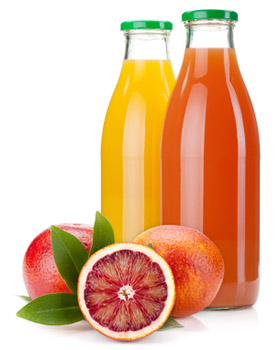


Thus, grapefruit juice appeared to inhibit CYP3A4, an important isozyme of cytochrome P450 since it oxidizes a broad range of drugs and xenobiotics, with predominant and perhaps exclusive action on presystemic drug elimination. The absolute increase in dehydrofelodipine AUC indicated that a subsequent metabolic pathway might also be inhibited and this was supported by measurements showing that the M3 metabolite AUC was reduced. The decrease in the AUC ratio was compatible with inhibition of the primary metabolic pathway.

Grapefruit juice reduced dehydrofelodipine/felodipine AUC ratio and increased absolute dehydrofelodipine AUC. Since grapefruit juice did not change intravenous felodipine pharmacokinetics, it indicates that the interaction with grapefruit juice resulted from inhibition of presystemic drug metabolism. Grapefruit juice markedly elevated plasma peak felodipine concentration ( C max ) but did not alter systemic felodipine elimination half-life ( t 1/2 ). Blood pressure reduction, heart rate increase and frequency of vasodilatation-related adverse events were also greater. The first report of this interaction revealed that grapefruit juice, but not orange juice, tripled mean plasma felodipine area under the curve (AUC) compared to water in borderline hypertensive patients. Plasma felodipine concentrations were more than five-fold greater with grapefruit juice compared with water ( Figure 1). A systematic examination for obvious possible causes, such as incorrect dose or drug assay problems, did not resolve this discrepancy and eventually resulted in a pilot project in a single volunteer to judge the role of the juice. Although plasma felodipine concentrations were not different between treatments, they were several-fold higher than observed in other pharmacokinetic investigations with the same dose of drug. The combination of a non-intoxicating dose of ethanol and felodipine resulted in lower standing blood pressure and a high frequency of orthostatic hypotension compared with felodipine alone in patients with untreated borderline hypertension. White grapefruit juice, particularly double-strength juice (single dilution of frozen concentrate), was the most effective. Grapefruit juice was chosen to mask the taste of the ethanol following an assessment of every juice in a home refrigerator one Saturday evening. Originally, a study was designed to test for an interaction between ethanol and the dihydropyridine calcium channel antagonist, felodipine, an analogue of nifedipine. Although in vitro findings support the flavonoid, naringin, or the furanocoumarin, 6′,7′-dihydroxybergamottin, as being active ingredients, a recent investigation indicated that neither of these substances made a major contribution to grapefruit juice-drug interactions in humans. The importance of the interaction appears to be influenced by individual patient susceptibility, type and amount of grapefruit juice and administration-related factors. Clinically relevant interactions seem likely for most dihydropyridines, terfenadine, saquinavir, cyclosporin, midazolam, triazolam and verapamil and may also occur with lovastatin, cisapride and astemizole. Medications with innately low oral bioavailability because of substantial presystemic metabolism mediated by CYP3A4 appear affected by grapefruit juice. At least 20 other drugs have been assessed for an interaction with grapefruit juice. The high variability of the magnitude of effect among individuals appeared dependent upon inherent differences in enteric CYP3A4 protein expression such that individuals with highest baseline CYP3A4 had the highest proportional increase. Since the duration of effect of grapefruit juice can last 24 h, repeated juice consumption can result in a cumulative increase in felodipine AUC and C max. Subsequent investigations showed that grapefruit juice acted by reducing presystemic felodipine metabolism through selective post-translational down regulation of cytochrome P450 3A4 (CYP3A4) expression in the intestinal wall. The novel finding that grapefruit juice can markedly augment oral drug bioavailability was based on an unexpected observation from an interaction study between the dihydropyridine calcium channel antagonist, felodipine, and ethanol in which grapefruit juice was used to mask the taste of the ethanol.


 0 kommentar(er)
0 kommentar(er)
